Princess Cut Diamond Buying Guide
How to find the perfect princess cut diamond for your engagement ring
We are reader-supported. Buying through any red colored link on our site may earn us commissions. Learn More.
How to find the perfect princess cut diamond for your engagement ring
The princess cut diamond, characterized by its square shape, is a great modern alternative to the classic round cut. Offering both fire and brilliance, princess cuts are typically more affordable due to efficient rough diamond utilization. However, their distinct sharp corners necessitate protective settings.
If you are considering purchasing a princess cut diamond, focus on H-I color and VS2-SI1 clarity to maximize value. Princess cut diamonds are a bit cheaper than round cuts with a typical price for a 1 carat princess cut being $3,700. If you follow our recommendations in this article, you will end up with a fantastic princess cut that is also an excellent value.
What is a princess cut diamond?
Are princess cut diamonds popular?
Are princess cut diamonds cheaper than round diamonds?
Princess cut diamonds: Cut quality
Princess cut diamonds: Clarity
Princess cut diamonds: Color
Is carat weight important for a princess cut diamond?
What setting style should I choose for a princess cut diamond?
FAQs about princess cut diamonds
Bottom line recommendation
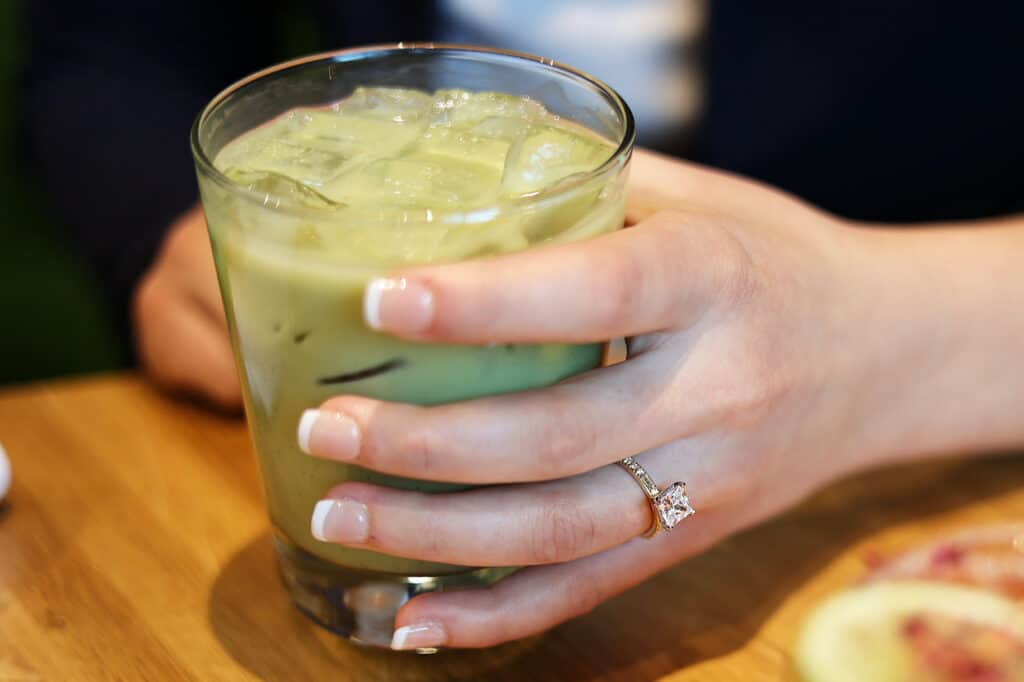
A princess cut diamond is traditionally a square diamond that offers excellent fire and brilliance. This fancy shape diamond is designed from the inverted pyramid of the rough diamond stone. Princess cuts, like this gorgeous 0.80ct H color, are among the most brilliant of all diamond shapes and are a popular choice for engagement rings.
Unlike emerald cut engagement rings and other square- or rectangular-shaped diamonds that feature a step cut faceting style, princess cut diamonds have a modified brilliant facet arrangement, offering both electrifying sparkle and a strong, attention-grabbing shape. Gemological Institute of America (GIA)
The highest quality princess cuts are those with a distinct square shape with a length-to-width ratio of 1.00 – 1.05. While you can find rectangle princess cuts, they aren’t desirable because they can lack brilliance. Princess cuts with an Excellent or Ideal cut quality make for truly stunning engagement rings.
If you come across the term “princess shape”, understand this means the same thing as princess cut. There’s no difference – but princess cut is the term used in the diamond industry.
Why you should trust us
A princess cut diamond usually has between 50 and 58 facets, depending on how the diamond is cut. Most of the facets are on the pavilion and crown, with a few on the girdle. Princess cuts also typically have two to four chevron patterns, which are cross patterns that can be seen when viewing the diamond from above.
When a diamond has two chevron patterns, the diamond reflects bolder flashes of white and colored light. When a diamond has four chevron patterns, the diamond has more scintillation — resulting in smaller flashes of white and colored light that can be seen when the diamond moves.
Be sure to look at each princess cut diamond closely to ensure it offers the brilliance and fire that you’re looking for. Feel free to reach out to our experts for a second opinion before making your selection.
More and more people are choosing a princess cut over a round brilliant for their engagement rings. According to Wikipedia’s article on diamond cut, the modern princess cut was first introduced in 1960 by A. Nagy of London.
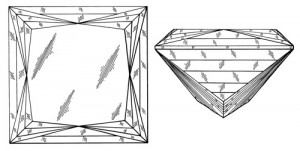
The princess cut is universally regarded as the runner-up to the round brilliant in today’s market. According to the chart from Jogia Diamonds’ blog that we refer to in our article about diamond shapes, a full 23% of searches on their site are for princess cuts.
That’s still a far cry from the 64% for round brilliants, but consider that the second runner-up was the emerald cut with only 3% of searches. The princess cut is squarely in 2nd place.
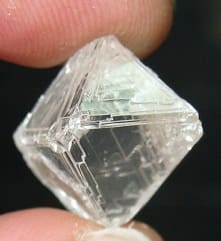
The princess cut is a favorite of diamond cutters for one very important reason — its yield from rough. Take a look at the picture on the left.
Now imagine cutting that piece of rough in two down the middle. What you’d be left with, basically, are two princess cuts! All that’s left to do is add some structure to the top of the stone and some brilliant faceting.
Now imagine just how much diamond material you would lose if you were to cut a round brilliant out of that piece of rough. The difference is quite stark.
A round brilliant will yield usually around 40% (meaning a sawed 1 carat piece of rough will yield a 0.40ct polished round diamond) while a princess cut will yield in the 80%-90% range! This is the primary reason why all else being equal, a princess cut is cheaper than a round diamond.
Compare this 1ct I/VS1 round cut diamond for $6,130 and this 1ct I/VS1 princess cut diamond for $4,440.
Another outgrowth of this phenomenon is that since princess cuts are only made from rough diamond crystals that are very high quality and very well-formed, that usually correlates with cleaner rough as well.
This selection of clarity grades on princess cut diamonds is notably skewed to the high end. You will never find a large selection of SI2 and I1 princess cuts.
In fact, this always caused a problem for my former employer, Leo Schachter, since they were supplying major princess cut programs to the major retail chains. It was always a problem to meet SI2 and I1 princess cut demand.
On the flip side, the fact that they have larger tables means that it’s more likely an SI clarity diamond will not be eye-clean as you can see with this diamond from Blue Nile. There is a higher chance that it will be visible if you look straight down into the diamond (the common way people look at a diamond once it’s mounted in a ring).
A consumer’s goal, in our opinion, should be to find an eye-clean diamond for the best price (taking into account other factors, such as carat weight, cut and color). Eye-clean means the diamond may have inclusions you can see with a magnifying glass, microscope or loupe, but the typical person is unable to see these inclusions with the naked eye.
We recently developed Ringo, a patented artificial intelligence model, that can examine videos of diamonds and determine if they are eye-clean. Ringo is also able to filter for other features, such as ensuring the cut quality of the diamond is up to standard, looking for fluorescence issues, and that it matches your choice of setting style.
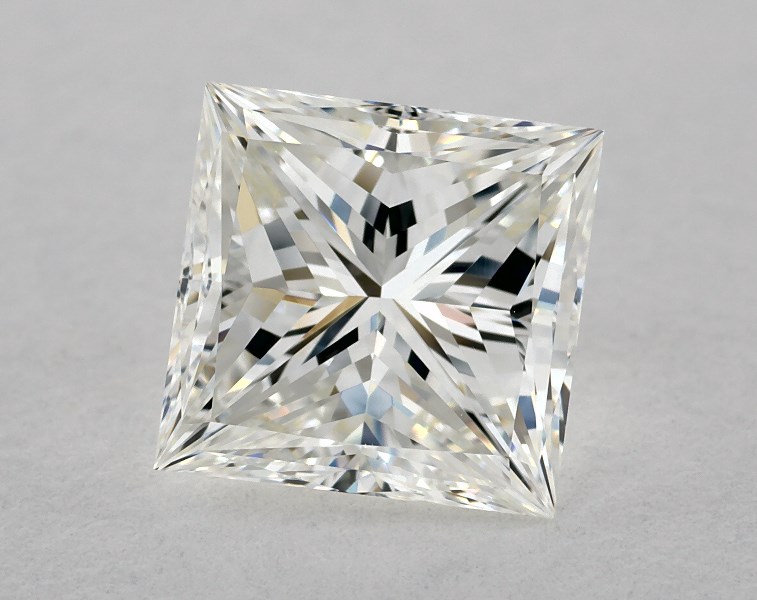


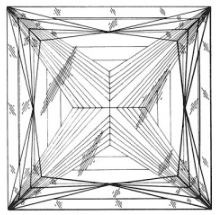
Now that you’re more familiar with the background of the princess cut, let’s get right to the information that’s pertinent to the consumer.
To find a truly stunning princess cut diamond ring, it’s important to have an understanding of the 4 C’s of diamonds – cut, clarity, color and carat – and how they affect a diamond’s appearance.
Prioritizing the right grades in the right areas will help you get the best value for money, as well as ensuring your princess cut diamond ring stands out.
Perhaps the trickiest part of buying the best princess cut is diamond cut. With rounds, it’s easy. GIA tells you their opinion, and you can trust it.
With princess cuts, though, you’re pretty much on your own. GIA will only grade polish and symmetry on a princess cut diamond. Unlike rounds, there’s really no industry-wide consensus on what parameters make up the perfect princess cut.
There is a good reason for this, of course. As we mentioned earlier, the whole genesis of this cut sprang from a desire to minimize diamond loss on the polishing wheel. As opposed to premium cut round diamonds, princess cuts are cut to fit the shape of the rough, and not the reverse.
So if a piece of diamond rough happens to be shaped like a well-proportioned princess cut diamond, then it will, by chance, end up as one. But if a piece of diamond rough happens to be shaped like a very deep and not well-proportioned princess cut, then it will, unfortunately, likewise end up as one.
Diamond cutters don’t want to be forced to adhere to one specific standard of princess cut diamonds precisely because of this. They need the flexibility to be able to adapt their polished diamond to the rough diamond.
Look for a total depth between 65% and 75%. Generally, lower is better. We prefer stones in the 68% to 73% range. They seem to give the best balance of brilliance to size.
For table percentage, we recommend staying under 75%. In general, there are two schools of thought regarding princess cut table sizes.
If you’re going to focus on small table princess cuts, then these generally look better with depth percentages in the 74-77% range.
One camp swears by small tables (68% and below) while others claim it really doesn’t matter, so they just go with what the rough naturally produces – slightly larger tables in the 73%-78% range to go along with depths creeping into the 76/77% range.
Small tables are the serious minority in the industry, so just be aware that if that is your taste, you might have a harder time finding a diamond.
Overall cut parameter recommendations for princess cut diamonds:
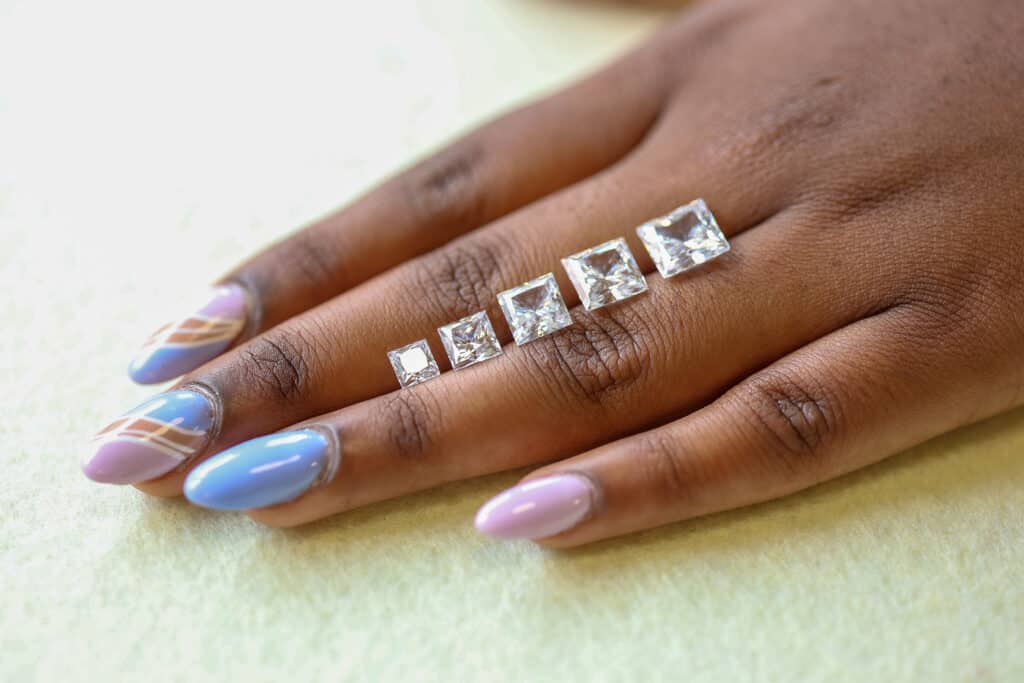
Regarding clarity, a princess cut is likewise similar to the round brilliant in that it’s a decent hider of inclusions. One thing you need to remember with princess cuts, though, is that there are serious issues of durability.
Since princess cuts have four sharp corners, they are prone to chipping (and you thought diamonds were forever!). If an inclusion is in one of the four corners of the diamond, that will greatly increase the chances of the diamond chipping.
If you’re buying the diamond already set in a ring, this is less of an issue unless you think that you might want to have the stone reset in a new ring in the future.
Read more about the diamond clarity chart.
With round brilliant cuts, we recommend buying SI2s or even I1s that are confirmed to be eye-clean. With princess cuts, though, it’s a bit harder to do since they are so few and far between.
So, with princess cuts, we recommend buying VS2 or SI1 clarity diamonds that are confirmed to be eye-clean (you can do this with a tool such as James Allen’s virtual loupe). SI2 and I1 clarity princess cut diamonds are in very short supply due to the high-quality of diamond rough that princess cut diamonds are cut from, but if you can find an eye-clean one, it would offer you incredible value.
VS1, VVS2, VVS1, and Internally Flawless (IF, or FL) are great, but why spend more money if they look the same as VS2 or SI1?
When it comes to color, you need to be a little more careful with a princess cut diamond than you would with a round brilliant. Since both are brilliant cuts, they both succeed in chopping up the light so the true color of the rough material is harder to perceive.
But since the light return on the round brilliant is superior, it is also better at keeping the true color of your diamond a secret. Because of this, we recommend when buying a princess cut diamond that you either pick an H or I Color diamond for the best value.
As you can see from this stunning diamond from Blue Nile, an I color can look perfectly clear in a princess cut, so long as the proportions are fine and it’s eye-clean.
You can go higher than H color, but I, personally, don’t believe the incremental whiteness you’ll gain is worth the higher diamond price you’ll have to pay.
One thing to keep in mind, though, is if you are buying your diamond to have it set in an engagement ring, then you need to make sure the color of your center stone matches the color of the accent diamonds. Unless you’re choosing a yellow gold or rose gold setting, we don’t recommend J color with princess cuts because they retain color slightly more than round brilliants.
You can go through recently purchased rings from our highest-rated retailers to see some examples.
The final of the 4 C’s is the carat weight. Though often misunderstood as a measurement of size, carat refers to the weight of a diamond – each carat is equal to 0.2 grams.
There is a correlation between carat weight and size, however. Higher-carat diamonds will invariably be larger in size.
Check out the size differences between the different carat weights compared to a US quarter.
The choice of carat weight is largely down to budget and preference. If your budget allows, you will generally look at diamonds of a larger carat weight. And if size is a priority, you may wish to allocate more of your budget towards carat than to other areas, like color and clarity.
It’s advisable not to sell out completely to get the largest princess diamond possible, however. Ensure you leave enough of your budget to get a well-cut diamond, and one with decent grades in color and clarity. A large diamond is not going to look that impressive if it’s poorly cut, or riddled with inclusions.
The price you pay for a princess cut diamond ring will vary greatly depending on the factors outlined above. Most notably, larger carat weights are more expensive. Your choice of color, clarity and cut grade will also influence the price, as will the setting style you choose for your ring.
The best ring settings for princess diamond rings are the channel and four-prong settings—such as a solitaire or three-stone ring. With a princess cut’s pointed edges, it’s important to ensure the corners don’t get chipped or damaged. A channel set or four-prong offers protection without masking the diamond’s beauty.
Because princess cuts are quite versatile, there are several stunning setting options. Here’s the full list of the best settings for princess cut diamond rings.
A solitaire setting allows the princess cut to take center stage and the maximum light to enter. This classic solitaire from James Allen is a prime example of a princess cut engagement ring that makes a statement.
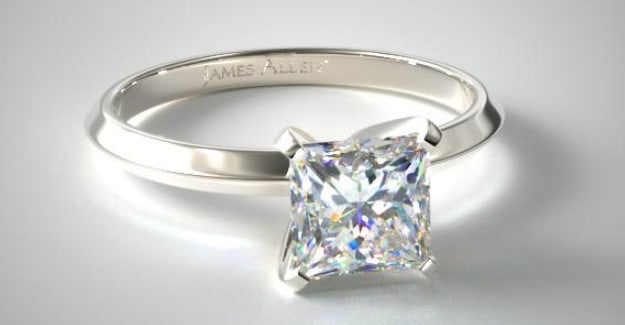
A channel setting offers security to princess cuts. If you are looking for a beautiful choice, this 1/4 carat channel engagement ring from Blue Nile.
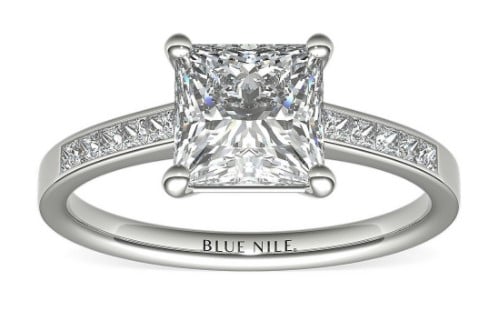
Halo engagement rings feature smaller diamonds that surround the center stone, making it appear even larger. Here is a platinum petite halo ring from James Allen.
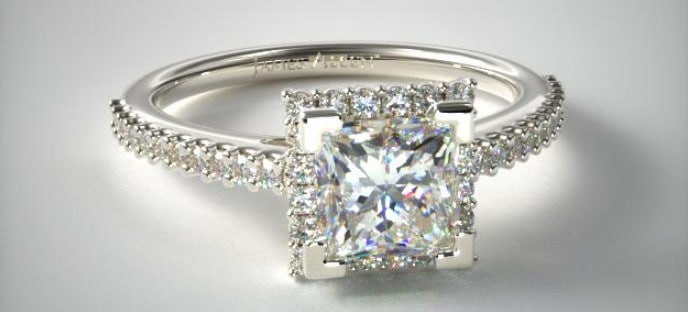
Antique style rings have more ornate, unique features, like this regal frame princess cut ring from James Allen.
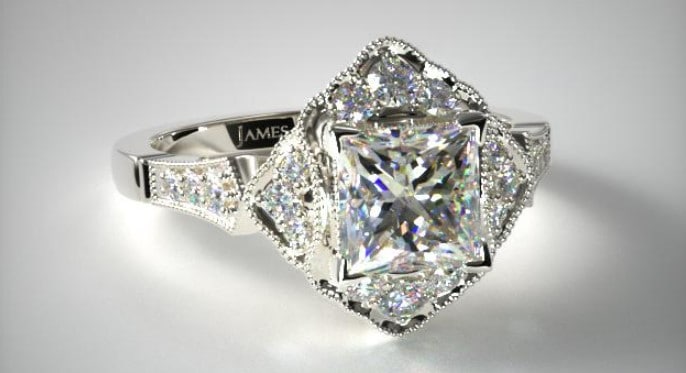
Shop for princess cut diamond engagement rings here.
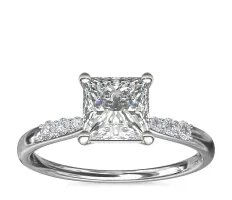


The most popular diamond shape is definitely the classic round cut. But if you’re searching for something more unique, there are many more diamond shapes (or cuts) to choose from. For example, pear or oval cut diamonds are a great alternative if you like the fire and brilliance that a brilliant cut diamond offers, but prefer a more elongated shape. The shape of pear and oval cut diamonds creates a slimming effect, perfect for certain hand or finger shapes.
If the square shape of a princess diamond appeals to you, the asscher cut is another option to consider. Our guide to all diamond shapes will help you navigate through all the options and find the one that suits you the best.
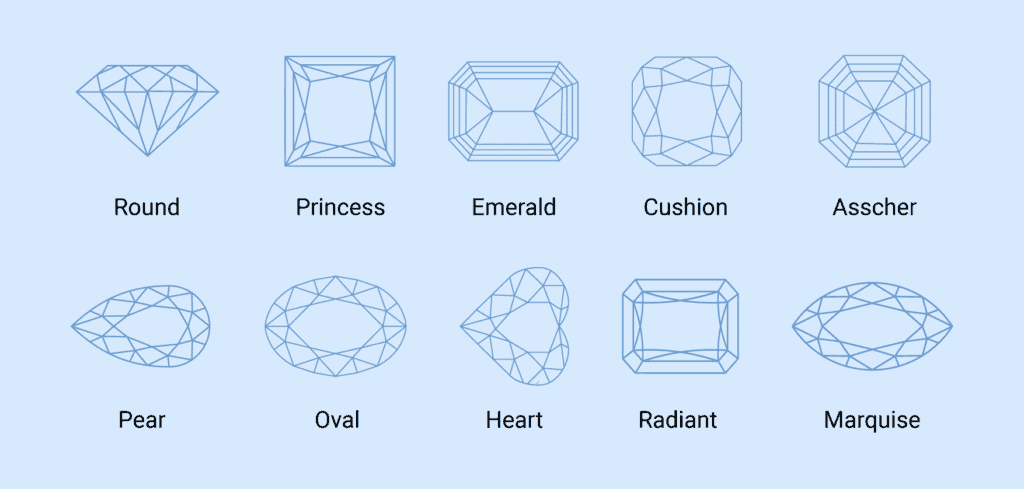
Princess cut diamond rings are some of the most popular engagement rings. Here, our experts answer the most common questions.
Princess cuts are less expensive than round Brilliant diamonds and many other diamond shapes because most of the rough stone is maintained in the cutting process. The princess cut is the second most popular diamond shape yet is affordable and offers an exceptional amount of brilliance.
Princess cut diamonds provide a high level of brilliance, which means there’s plenty of white light reflection or “sparkle.” Princess cuts offer some of the most brilliance of any diamond shape due to the way they’re cut from the rough stone.
Princess cuts tend to look slightly smaller than other diamonds of a similar carat weight because of their square length-to-width ratio. A princess cut has a smaller diameter and surface area.
Yes, princess cut diamonds are cheaper than round cut diamonds with similar characteristics. Because more of the original stone is retained in princess cuts, the cost is significantly lower. For instance, a 1 carat, I color, VS1 clarity princess cut costs $4,560 while a similar round cut stone also costs $6,130. However, keep in mind that the princess cut is much smaller (5.45*5.26mm) than the round (6.37*6.40).
A 1 carat princess cut diamond with I color, VS2 clarity, and an Ideal cut costs $3,500 on average. If you choose a 1 carat princess cut with I color, SI1 clarity, and an Ideal cut, the average cost is close to $3,000. Like any diamond, the price of a 1 carat diamond depends on the cut quality, color, and clarity grades.
A 2 carat princess cut diamond with I color, SI1 clarity, and an Ideal cut costs $11,200 on average. The price of 2 carat diamonds depends on the color, cut quality, and clarity grades.
We understand that looking for the perfect diamond can be daunting. That’s why our experts are here to help guide you on your search.
Contact us and we’ll help you find a princess cut diamond that looks stunning, matches your partner’s taste, and fits your budget. From assessing diamond clarity to matching a diamond to a setting, we’re here to lend our years of experience to help you make the right choice.
In this article we will cover everything you need to know in order to get a stunning princess cut diamond for your engagement ring (or other diamond jewelry).
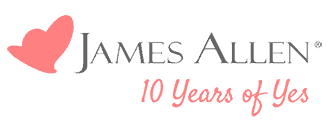



Before you buy a diamond, get personal buying advice from industry veterans. We'll help you get the best diamond for the money.
DISCLAIMER: We don't use your email for marketing. Period.
A diamonds’ price is determined primarily by the 4 Cs of the diamond. On the wholesale level, diamond prices are first based on a diamond shape and
Buying an engagement ring is often one of the first major purchases in a person's life. The process can be fraught with tension as there are so m
A wide range of 1 carat diamonds exist both in online markets and local diamond jewelry stores. Not only are there significant differences in beauty
Please enter your email address to receive your 25% off coupon code:
Here is your coupon code: GFDSF3GF